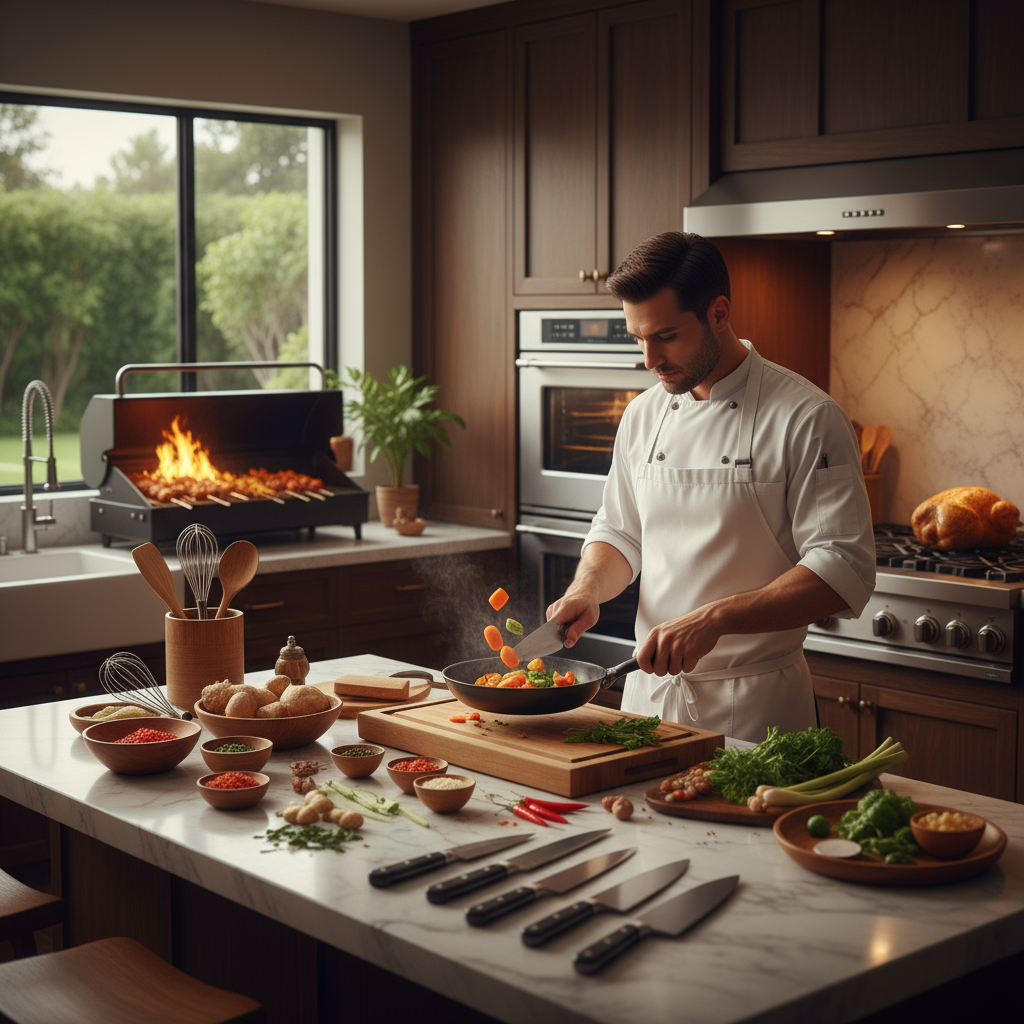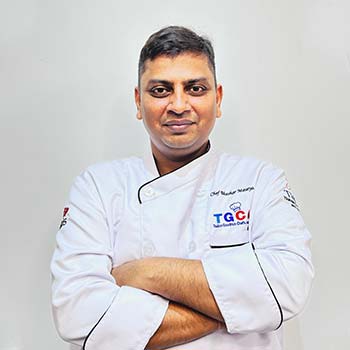

Mastering western cuisine represents one of the most rewarding culinary journeys any home cook can embark upon, opening doors to a world of sophisticated flavors, time-honored techniques, and elegant presentations that define global fine dining. Whether you're exploring these skills through beginner cooking classes or developing techniques independently using western food recipes, understanding fundamental Western cooking methods transforms ordinary home cooking into extraordinary culinary experiences.
The appeal of western cooking classes lies in their systematic approach to technique mastery,from French mother sauces and Italian pasta perfection to British roasting methods and American comfort food classics. Each technique builds upon fundamental principles that, once understood, enable endless creativity and adaptation. Many aspiring cooks discover these skills through specialized western cuisine course programs that provide structured learning paths from basic knife skills to advanced culinary applications.
For those seeking formal instruction, numerous western cuisine courses in India options now provide access to professional-quality training without international travel. These programs recognize the growing demand for skilled home cooks who can create restaurant-quality Western dishes, whether for personal satisfaction, entertaining guests, or potential culinary career development.
This comprehensive guide explores essential Western cooking techniques that every home cook should master, along with information about western cuisine courses for beginners and other learning opportunities available throughout India.
Proper knife technique forms the foundation of all Western cooking, influencing everything from ingredient preparation efficiency to final dish presentation. Unlike some cooking traditions that rely heavily on specific equipment, Western cuisine emphasizes precise knife work as the primary tool for ingredient transformation.
Essential Knife Cuts:
Professional Knife Techniques:
These fundamental skills are typically the first lessons taught in quality beginner cooking classes and western cooking classes, as they directly impact cooking success and kitchen efficiency.
French culinary tradition identifies five mother sauces (sauces mères) that serve as foundations for countless derivative preparations. Mastering these sauces, often emphasized in western cuisine course curricula, provides the basis for sophisticated sauce-making throughout Western cooking.
The Five Mother Sauces:
Base: Butter, flour (roux), milk
Applications: Lasagna, gratins, cheese sauces
Derivatives: Mornay (cheese), Soubise (onion), Mustard sauce
Base: Butter, flour (roux), light stock
Applications: Chicken and fish dishes, cream soups
Derivatives: Allemande, Supreme, Bercy
Base: Butter, flour (brown roux), brown stock
Applications: Meat dishes, gravies
Derivatives: Demi-glace, Bordelaise, Chasseur
Base: Egg yolks, butter, lemon juice, cayenne
Applications: Eggs Benedict, vegetables, fish
Derivatives: Béarnaise, Maltaise, Choron
Base: Tomatoes, aromatics, herbs
Applications: Pasta, pizza, braised dishes
Derivatives: Marinara, Puttanesca, Arrabbiata
Western cuisine emphasizes precise heat control and method selection to achieve optimal results. Understanding when and how to apply different cooking techniques distinguishes professional-quality results from amateur attempts.
Dry Heat Methods:
Moist Heat Methods:
Program: Hobby Course in Western Cuisine
Format: Online, self-paced learning
Features: Recipe videos, live doubt-clearing sessions, digital certification
Benefits: 24/7 mobile app access, practical demonstration support
Target: Home cooks and culinary enthusiasts
Location: New Delhi (expanding to Guwahati and Trivandrum)
Programs: Comprehensive culinary courses with Western cuisine modules
Accreditation: World Association of Chefs Societies (WACS) accredited
Duration: 3-12 months depending on program intensity
Features: Professional equipment, industry-experienced instructors
Focus: Online vegetarian Western cooking courses
Duration: 60-day structured programs
Specialties: Italian, French, and Mediterranean cuisines
Benefits: Celebrity chef instruction, practical recipe focus
Target: Beginner to advanced home cooks
Methods: Hands-on practice with state-of-the-art equipment
Cuisines: Chinese, Italian, Mediterranean, Continental
Format: Interactive cooking demos, team-building classes
Experience: Over 13 years, 3000+ training classes
Options: 1-day courses, evening classes, weekend programs
Range: 60+ courses in culinary, bakery, and confectionery
Atmosphere: Luxury learning environment with veteran chef instruction
Coverage: Multiple cities including Bangalore, Gurgaon
Focus: Western cuisine basics, mother sauces, soup classification
Structure: 3-hour intensive sessions with practical components
Skills: Proper cutting techniques, seasoning, cooking methods
Delhi NCR Region:
Multiple institutes offer western cooking classes ranging from basic knife skills to advanced culinary techniques. Options include weekend workshops, evening classes, and intensive programs designed for working professionals.
Mumbai Programs:
The city hosts numerous beginner cooking classes that focus on Western techniques alongside Indian cuisine, providing comprehensive culinary education for diverse skill levels.
Bangalore and Southern Cities:
Growing availability of western cuisine course options reflects increasing demand for international cooking skills in India's tech capitals.
Fresh Pasta Preparation:
Sauce Pairings:
Emulsion Mastery:
Understanding how to create and maintain stable emulsions elevates home cooking to professional standards.
Preparation Philosophy:
Adopting professional kitchen organization principles transforms home cooking efficiency and results quality.
Organizational Principles:
Seasoning Techniques:
Flavor Building:
Visual Appeal:
Advanced Training Options:
Mastering western cuisine techniques represents an investment in lifelong culinary skills that enhance both personal cooking satisfaction and potential professional opportunities. Whether you're exploring these skills through beginner cooking classes, comprehensive western cuisine course programs, or independent study using quality western food recipes, the fundamental techniques covered in this guide provide the foundation for endless culinary creativity and growth.
The growing availability of western cuisine courses in India reflects the increasing recognition of these skills' value for both home cooks and culinary professionals. From online programs like TGCA's flexible courses to intensive hands-on training at institutions like IICA, quality instruction has never been more accessible to Indian culinary enthusiasts.
Remember that mastering western cooking classes is a journey rather than a destination. Each skill you develop builds upon previous knowledge, creating a comprehensive ability set that enables adaptation, creativity, and continuous improvement. Whether you're seeking stress relief through weekend cooking, developing skills for sophisticated entertaining, or exploring potential career opportunities, Western culinary techniques offer endless possibilities for growth and satisfaction.
The western cuisine course for beginners pathway provides structured learning that accelerates skill development while building confidence in the kitchen. Professional instruction, whether through formal western cooking course programs or intensive workshops, offers valuable feedback, technique correction, and exposure to advanced methods that might be difficult to master independently.
Start with fundamental skills, practice regularly, and don't hesitate to seek professional instruction when ready to advance your capabilities. The techniques you learn will serve as a foundation for countless variations and personal innovations, making every meal an opportunity to apply and refine your growing Western culinary expertise.

Culinary Instructor
Click one of our representatives below to chat on WhatsApp or send us an email to
info@tedcoeducation.com
Counselor
Bakery and Pastry Courses
Counselor
Culinary Arts Courses
Click one of our representatives below to chat on WhatsApp or send us an email to
info@tedcoeducation.com
Counselor
Bakery and Pastry Courses
Counselor
Culinary Arts Courses